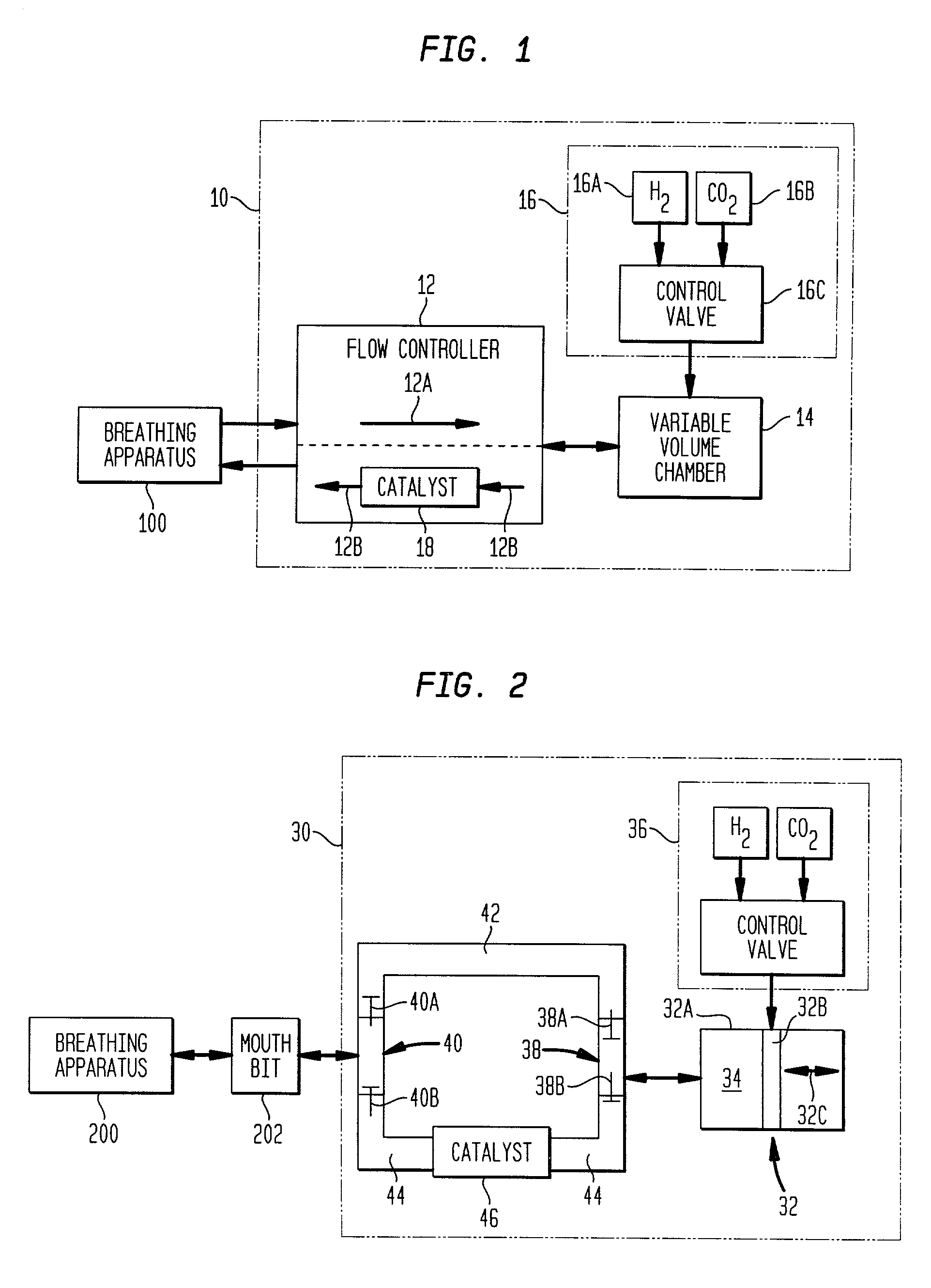System for simulating metabolic consumption of oxygen
a metabolic consumption and oxygen technology, applied in mechanical equipment, valves, operating means/releasing devices, etc., can solve the problems of limiting the work capacity of deep-sea divers, increasing gas density, and restricting the diver's ability to do useful work
- Summary
- Abstract
- Description
- Claims
- Application Information
AI Technical Summary
Problems solved by technology
Method used
Image
Examples
Embodiment Construction
[0017]Referring now to the drawings, and more particularly to FIG. 1, a system for simulating metabolic consumption of oxygen in a breathable gas is illustrated within the box defined by dashed lines 10. By way of example, simulating system 10 will be described with respect to its use with a closed-circuit breathing apparatus 100. However, it is to be understood that simulating system 10 could also be used with an open or semi-closed circuit breathing apparatus without departing from the scope of the present invention.
[0018]Simulating system 10 includes a flow controller 12 coupled to breathing apparatus 100, a variable volume chamber 14 coupled to flow controller 12 and a source 16 of hydrogen (H2) gas and carbon dioxide (CO2) gas. Source 16 is representative of either individual sources 16A and 16B of hydrogen and carbon dioxide, respectively. Alternatively, the hydrogen and carbon dioxide gases could be mixed together in predetermined proportions. Source 16 also includes a contro...
PUM
 Login to View More
Login to View More Abstract
Description
Claims
Application Information
 Login to View More
Login to View More - R&D
- Intellectual Property
- Life Sciences
- Materials
- Tech Scout
- Unparalleled Data Quality
- Higher Quality Content
- 60% Fewer Hallucinations
Browse by: Latest US Patents, China's latest patents, Technical Efficacy Thesaurus, Application Domain, Technology Topic, Popular Technical Reports.
© 2025 PatSnap. All rights reserved.Legal|Privacy policy|Modern Slavery Act Transparency Statement|Sitemap|About US| Contact US: help@patsnap.com


